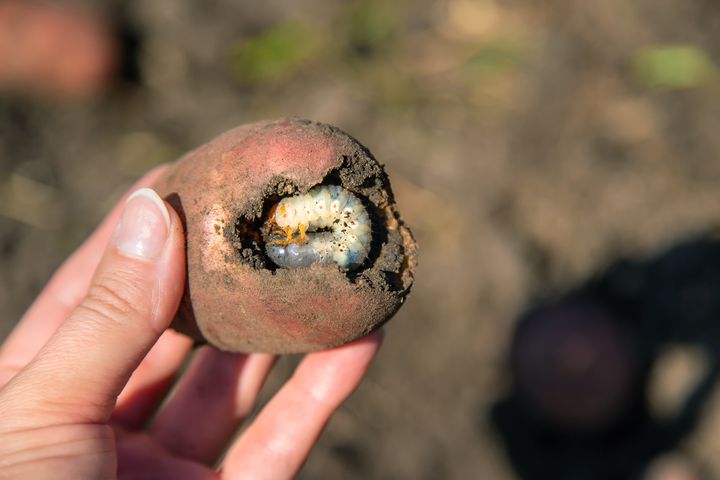
Having a garden is a beautiful thing, isn’t it? It’s linked to better physical and mental health, it can smell amazing, and, if managed correctly, it looks beautiful too.
But like all of life’s joys, the perfect lawn comes at a cost. From pesky pests to dodgy weather, it feels like a gardener’s work is never done – and now, gardeners are being asked to check for signs of the (visually unfortunate) chafer grub in their backyard.
Steve Taylor from GreenThumb recently told WalesOnline that “the next two months are key periods for the larvae and failure to stop their attack on your lush grass could lead to your lawn needing expert care to revive it.”
Here’s how to check for the grub – and what to do about it once you’ve seen it.
Some chafer grubs are harmless
Chafer bugs aren’t a single species – the term refers to about 80 different varieties in the UK. While some species of chafer grub are completely harmless and only feast on dung or compost, others like nothing more than chowing down on your most verdant grass.
“Chafer grubs can be found in the soil under the loose turf. They have stout white bodies curved in a C shape, light brown heads, with three pairs of legs at the head end. They are bigger than the adult beetles and, if straightened out, can be up to 18mm (almost ¾in) long,” the Royal Horticultural Society (RHS) says. Their damage is most visible in autumn and spring, as this is when larvae are most lively. “The weather conditions are set to be perfect for the... pests to thrive in and failure to deal with these destructive bugs can lead to the demise of gardens,” Taylor told WalesOnline.
How can they affect my garden?
Some species of the beetle – only those found in turf – can damage your grass by eating the roots.
This leads to patches of paler, discoloured grass that can appear yellow.
The grubs can have an unwanted side-effect on your turf, too – “Birds, particularly of the crow family (jays, magpies, rooks and crows), badgers and foxes tear up turf in order to access the grubs to feed on them,” shared the RHS.
Oh, lovely.
So how can I get rid of them?
The RHS recommends buying pathogenic nematodes, usually Heterorhabditis bacteriophora, via mail order and letting ’em loose on the affected area. They are a biological control so will not damage your soil or plants.
If you apply them in winter, the soil will be too cold for the grubs to live anyway. “As a preventive measure nematodes can be applied in July to September. Nematodes should be applied as soon as possible after purchase, following the suppliers’ instructions. It may be necessary to water the lawn before and after application to ensure the soil is sufficiently moist for nematode activity and survival,” they say.
“There are no pesticide controls for chafer grubs in lawns which can be applied by home gardeners,” the RHS add.